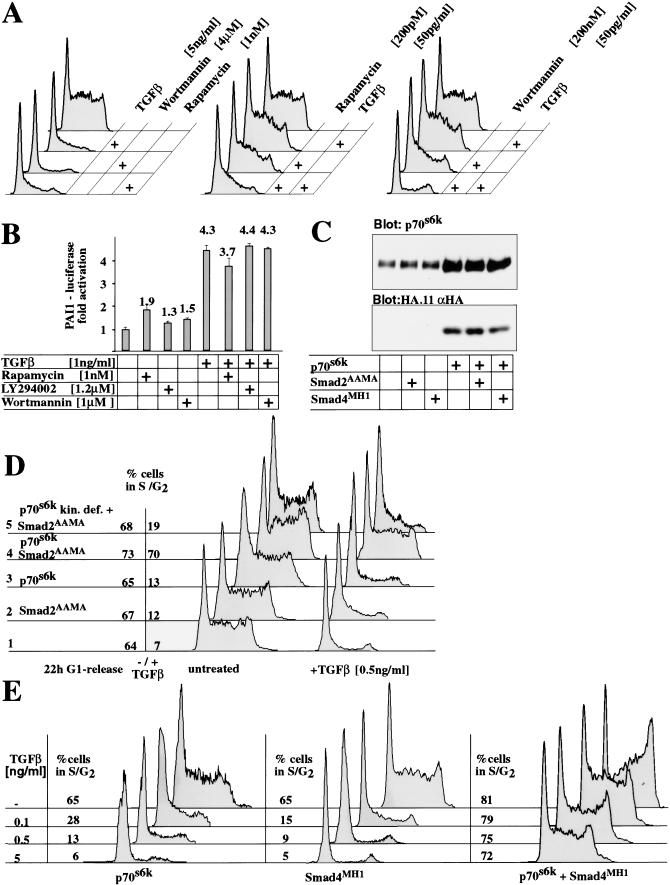Figure 2.
p70s6k pathway is rate limiting for TGF-β-induced G1 arrest. (A,B) Synergistic action of TGF-β with Wortmannin and Rapamycin on G1 arrest, but not transcriptional activation of a TGF-β responsive promoter. (A) FACS analysis of EpH4 cells 22 h after cell cycle release. Cells were treated with various drugs as indicated during the entire release period. High concentrations of TGF-β Wortmannin or Rapamycin alone induce G1 arrest in epithelial cells (left panel). Ineffective doses of Wortmannin and Rapamycin complement low, noninhibitory TGF-β concentrations to cause a complete G1 arrest (central and right panels). (B) Wortmannin, LY 294002, and Rapamycin did not affect TGF-β-induced PAI-1 reporter gene transcription. (C,D) Overexpression of p70s6k (C, Western blot) and FACS analysis determining proportion of cells in G1 after TGF-β induction in dependence of p70s6k and Smad2AAMA expression (D). Only coexpression of p70s6k and dominant-negative Smad2 protein release cells from TGF-β-induced G1 arrest. Neither p70s6k (D, lane 3) nor Smad2AAMA (D, lane 2) alone are capable to relieve the TGF-β-mediated cell cycle arrest, whereas both proteins expressed together effectively do so (lane 4). (E) FACS analysis of cells released from G1 arrest 22 h after TGF-β induction in dependence of p70s6k and Smad4MH1 expression. Activation of p70s6k and inhibition of Smad-induced transcription are sufficient to completely protect cells from TGF-β-induced cell cycle arrest.

